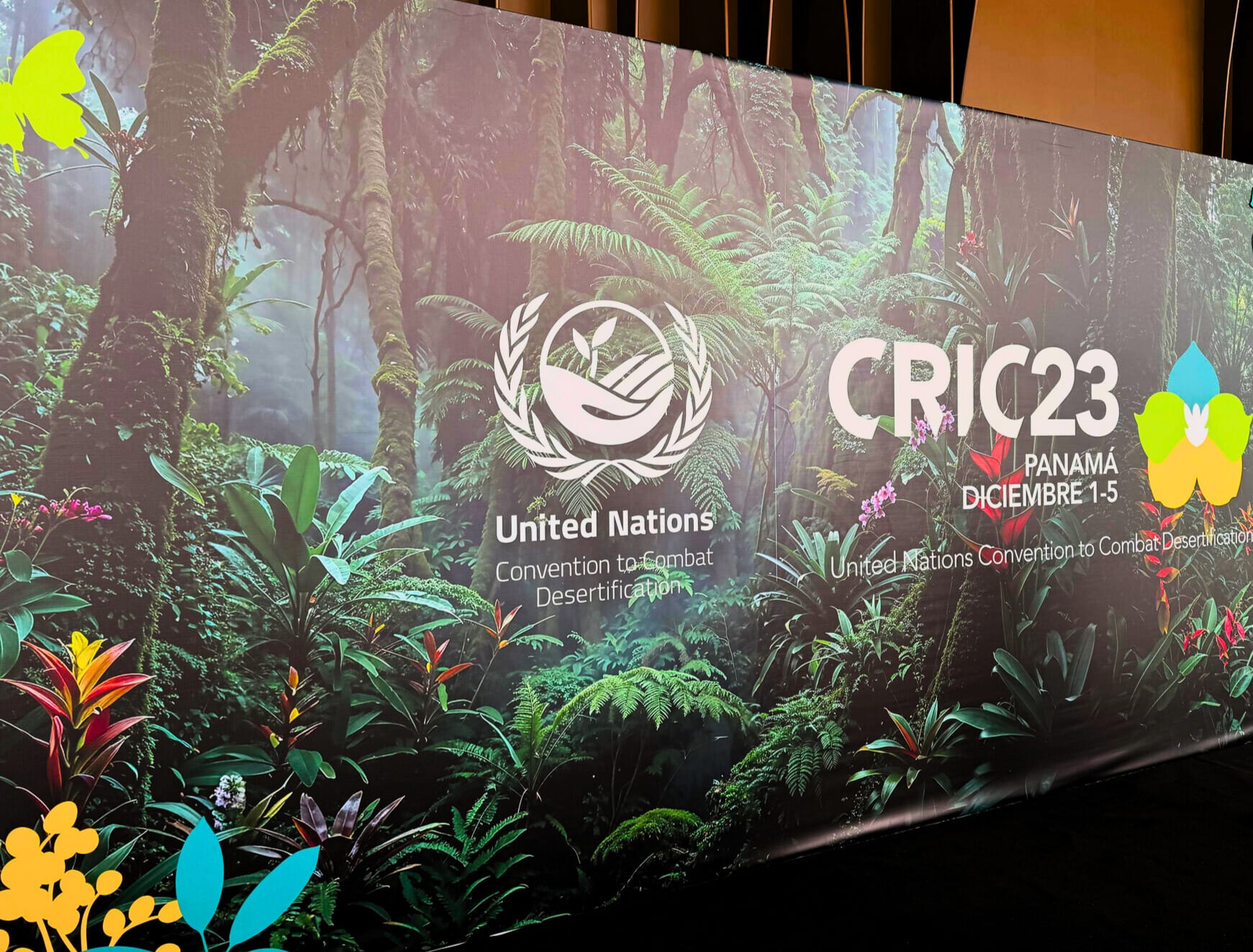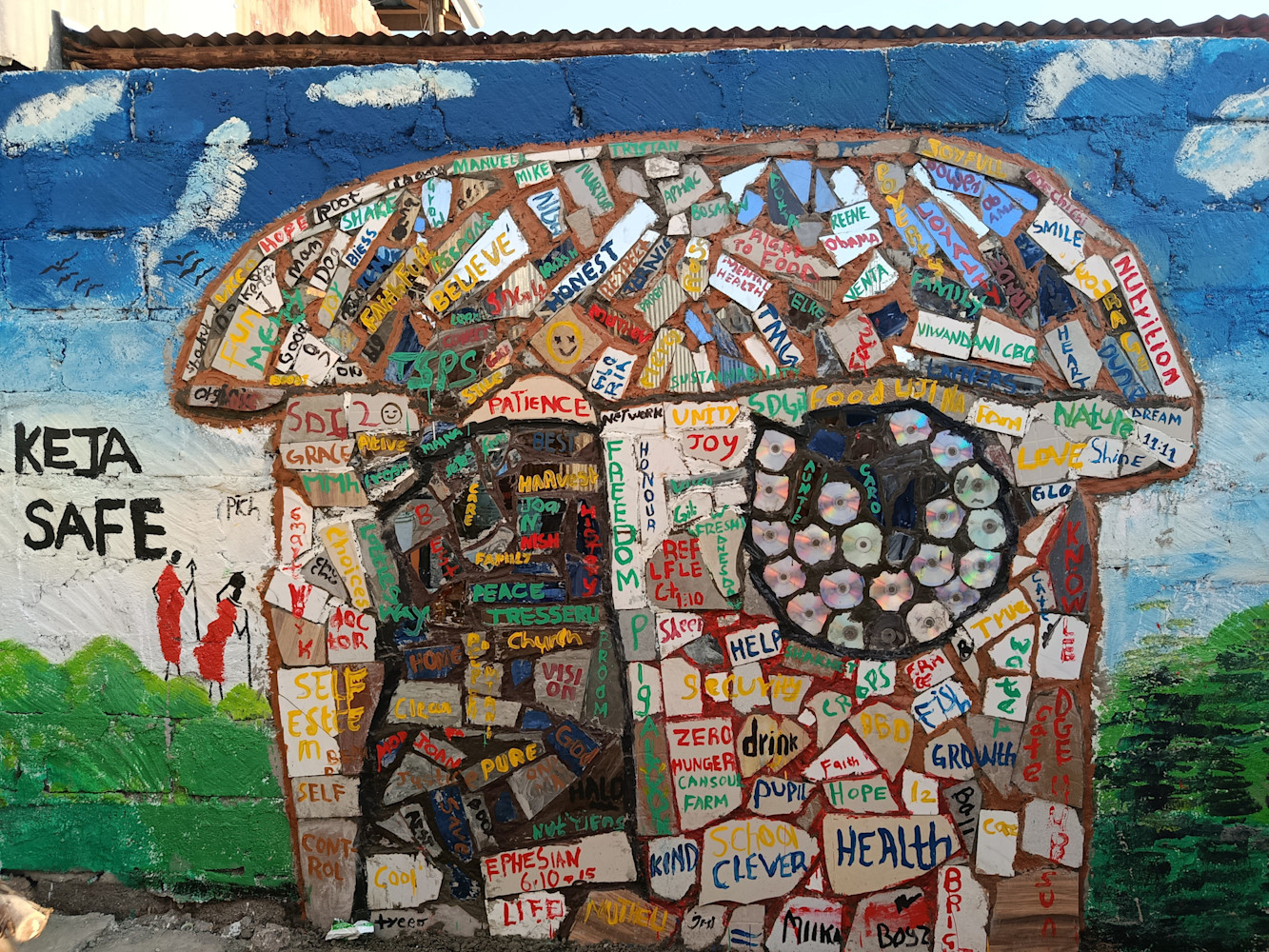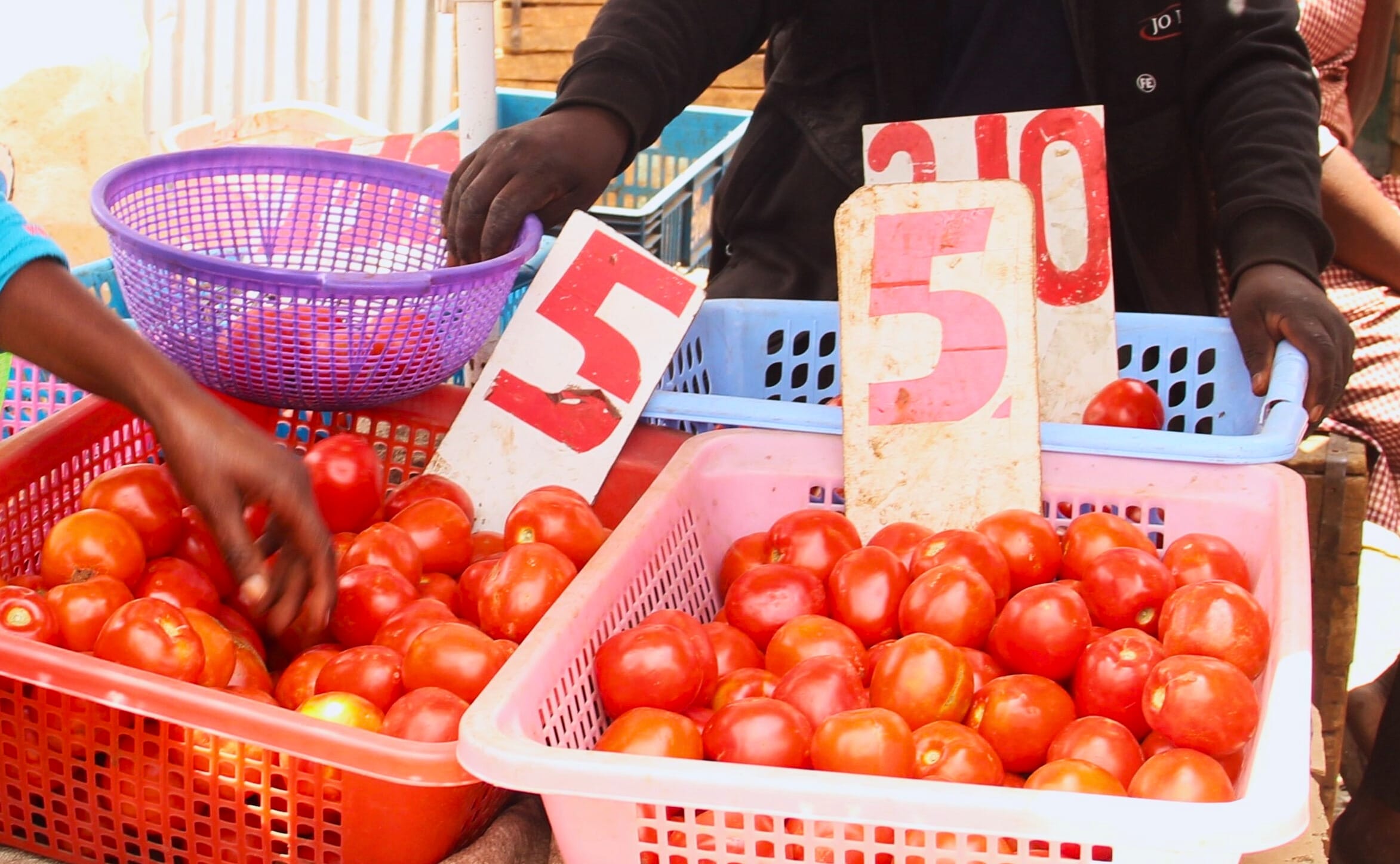For a just transition to a sustainable planet we must secure land rights
Highlights of UNCCD COP 15 contributions by TMG and partners
by Wangu Mwangi | 2022-05-23

Governments underestimate the power of communities.
Violet Shivutse
It is often pointed out that we are well into the final “Decade of Action” that must deliver on global commitments to achieve the Sustainable Development Goals (SDGs) by 2030. It is also increasingly acknowledged that the world is way off track on most of the 17 Global Goals.
The 15th session of the Conference of the Parties (COP 15) to the UN Convention to Combat Desertification (UNCCD) took place from 9-20 May in Abidjan, Côte d'Ivoire. The UNCCD is one of three multilateral environment agreements – along with conventions on climate change and biodiversity – that emerged from the World Conference on Environment and Development (UNCED, or the Earth Summit) in 1992. With its focus on restoring degraded drylands, the UNCCD increasingly recognizes that it’s SDG-aligned target of land degradation neutrality cannot happen without addressing the intrinsic link between people and the landscapes in which they live, produce food, and earn a livelihood.
“We see land as a resource to exploit,” lamented Abdoulaye Mar Dieye, UN Special Coordinator for the Sahel, during a high-level COP 15 round table that explored strategies for strengthening responsible land stewardship. Noting that 40% of our land is degraded, he stressed that humanity cannot move forward unless we repay our “debt of karma” to the environment.
As a think tank focusing on “how” to transition to sustainability, TMG Research gGmbH works at the interface of these questions. At COP 15, we co-hosted four side events that explored practical entry points to empower communities that depend most on land and natural resources to claim their legitimate rights and fulfil their rightful roles as stewards of these precious resources for the benefit of people and planet.
This overview primarily draws on discussions at the launch event for the Human Rights and Land Navigator: a new online tool that helps connect various aspects of responsible land governance to relevant human rights standards and obligations. Please see links at the end of this article for reporting from our other COP 15 sessions.
Embedding land rights in human rights obligations: Towards a roadmap
The evidence is clear, there can be no just transitions towards climate-resilient and land degradation-neutral landscapes without securing the legitimate land tenure rights of those who live and work on the land.
Jes Weigelt
With this introductory statement, Jes Weigelt, Head of Programmes at TMG, provided an overarching rationale for TMG’s strong presence in Abidjan, and our proactive approach to supporting UNCCD parties and other stakeholders to implement the landmark decision on land tenure.
COP 15 coincided with the global commemoration of the 10th anniversary of the Voluntary Guidelines on Responsible Governance of Land, Forests and Fisheries in the Context of National Food Security (VGGT). In addition to actively supporting follow up negotiations on the land tenure decision at this COP, TMG Research was involved in developing two land governance toolkits launched at the session: The Technical Guide on the Integration of the VGGT into the Implementation of the UNCCD - co-published by the Food and Agriculture Organization of the UN (FAO) and the UNCCD; and the Human Rights and Land Navigator, co-developed with the Danish Institute for Human Rights and the Malawi Human Rights Commission.
“Let us be clear …. The fact that the Guidelines are voluntary does not mean that human rights are voluntary,” emphasized TMG Managing Director, Alexander Müller, as he opened the session. Noting the VGGT were specifically designed to support countries to meet their human rights obligations, he cited the International Covenant on Economic and Social and Cultural Rights, in which 170 countries commit themselves to progressively realize the right to food, as well as access to land as a means for ensuring food security. The fact that more than 800 million people are going hungry today is a blatant violation of their human rights, he stressed, which makes the Navigator a powerful tool for applying the relevant binding human rights obligations and holding governments accountable.
Sebastian Lesch, Head of the Agriculture Department at the German Federal Ministry for Economic Cooperation and Development (BMZ) lauded the UNCCD for being the only multilateral agreement to explicitly address the issue of land tenure. He noted that while the VGGT may be considered soft law, they are based on many important and binding human rights, expressing his ministry’s strong support for the TMG-led human rights-based land monitoring programme. He welcomed, in particular, its focus on promoting greater transparency and accountability of and governance actors and helping ensure that large-scale restoration activities “do no harm" to people and the land and ecosystem resources on which they depend.
Therese Arnesen, UN Human Rights Office, described the Navigator as an illustrative example of how to “unpack and apply” human rights. Through the UNCCD land tenure decision, she said, parties have already adopted key elements of a rights-based approach to their work and "...must now take the next step of ensuring that people can actively and meaningfully participate in decision making that affects them, be it at the COP or at local and national levels." She suggested that making explicit references to human rights such as the right to a clean, healthy and sustainable environment can contribute to strengthening COP decisions on land tenure.
Putting the Human Rights and Land Navigator to the test
The Navigator adds one more element that can help the political economy to change in the interests of the most vulnerable….It perhaps provides the missing link for us to achieve the needed changes at scale.
Adriano Campolina

Maria Ploug Petersen, Danish Institute for Human Rights, took participants on a virtual tour of the Human Rights and Land Navigator, which draws on an extensive database of international human rights standards and links them individual paragraphs of the VGGT. She explained that the fundamental objective of the tool is to demonstrate the link between specific questions around access to land and resources and their human rights underpinnings. This provides practical entry points for land rights defenders, human rights bodies, and decision makers at different levels to advocate for and monitor progress on land governance instruments.

As one of the early users of the tool, Makhumbo Munthali, Malawi Human Rights Commission, highlighted how they are exploring the potential of the Navigator to better analyse land rights violations. He discussed how a recent land reform bill led to the expropriation of land without offering due compensation. By filtering applicable laws in the Navigator, the Commission was able to raise awareness of parliamentarians, enabling them to reference applicable sections of the VGGT, and hence make a stronger case in favour of affected communities. Makhumbo also described how MHRC is drawing on the Navigator to address one of its core mandates to compile shadow reports on the implementation of various human rights treaties.
In a final round of reflections on potential applications of the tool to strengthen global environmental governance, Miriam Medel Garcia, UNCCD, urged the world to draw lessons from the wasted years when climate change and SDGs were viewed as “separate agendas.” She expressed hope that the Navigator will help open up honest conversations on land tenure, enabling UNCCD parties to make headway on a follow up decision to be adopted at COP 15.
Mario Boccucci, UN-REDD, emphasized that the global community is moving away from an era of negotiations and commitments to a decade of “massively scaled up action to restore and conserve forests as one-third of the climate solution.” Noting that we cannot increase the productivity of degraded lands without securing land rights, he welcomed the Navigator as “a comprehensive analytical and advocacy tool” for guiding the necessary governance reforms and human rights safeguards.


Adriano Campolina, FAO Land Tenure Unit, observed that the VGGT were developed in direct in response to land grabs linked to the 2008 food crisis. Noting parallels with the current global scenario, he underscored that we will not achieve meaningful change until we address the underlying political dynamics that lead to growing inequality and violation of legitimate tenure rights. The Navigator “gives a little bit of teeth,” he said, allowing the excluded to not only be aware, but also to claim their rights and hold duty bearers to account.
Connecting the dots
It took us a long time to think about the SDGs as one [integrated] agenda. We no longer have the luxury of time…. We must be much quicker to realize that the human rights and [land governance] are part of the same agenda.
Miriam Medel Garcia
While pointing to the value of the Navigator as a torch that exposes the injustices within current land governance processes, these reflections also underscored the importance of making connections – at different scales – in order to leverage the power of collective action. A practical example of the potential of grassroots communities to spearhead such action was provided by the closing speaker, Violet Shivutse, founder of the Shibuye Community Health Workers, a women’s group from western Kenya, and Chair, Huairou Commission.
“We have an expectation that access to land will change our lives,” she began, noting grassroots groups are aware that their governments are signatories to various international agreements, “… but we often do not see how these are implemented or applied to our realities.” She described how her grassroots women’s movement has initiated bottom-up processes to strengthen women’s access to land to capitalize on their role as primary food producers, and providers for their families and extended communities. She underscored the importance of integrating women’s unique perspectives and knowledge into agricultural planning and reporting processes, for example by monitoring women’s ability to make decisions on which crops are planted on family farms to ensure greater diversity and nutritional value.
Commenting on the value of such grassroots perspectives to the follow up and review component of the SDGs, Jes Weigelt commended the UNCCD for integrating land governance indicators to its monitoring and evaluation framework. He cautioned, however, that democratizing the actual process of generating the data is still in its infancy.
So how can we achieve impact on climate, biodiversity conservation and other global targets without violating the land rights of smallholder farmers and pastoralists, women, indigenous communities, and other vulnerable groups? Our COP 15 sessions underscored the importance of drawing on community-level realities to change mindsets. This, reflected Alexander Müller, offered a glimpse of the kinds of partnerships that we need to make this case at different levels. “Together we can reinforce the message that: land rights are people’s rights. All land is local. And, therefore, all human rights are also local,” he concluded.
Towards COP 27: Facing some uncomfortable truths in the climate transition
Listening to people is not just a moral, but legal imperative
Therese Arnesen
While climate is undoubtedly the “big sister” of the three Rio Conventions, the UNCCD is increasingly becoming the locus of conversations around the importance of connecting “people and land” in the transition to a more climate-resilient world.
As numerous speakers across the four COP 15 sessions noted, inclusive policy making must build on local struggles to stake legitimate claims to land. As global demand for land – including for food production, biofuel production or meeting climate change mitigation targets – continues to grow, we will continue to see a corresponding rise in land-based conflicts. "How one company can lease 62 million acres of land without violating rights?” Müller wondered, emphasizing that “even ‘marginal’ land is inhabited by people." This raises fundamental questions about the human rights basis of the global target to restore "one billion hectares of degraded land by 2030."
Ultimately, national governments have the primary responsibility for ensuring that programmes to implement all three Rio Conventions comply with human rights obligations. In the words of Teddy Kamato, UNCCD Focal Point for Malawi, “we must recognize that land is degraded because communities depend on these areas for their livelihoods.” All stakeholders must start listening to communities to take on land tenure questions that are at the heart of responsible land governance, he concluded.
TMG is grateful to the support of the UNCCD, BMZ, GIZ and the Global Landscapes Forum for facilitating our contribution to COP 15.
For more COP 15 publications and reporting, please visit the main event page.
View of COP 15 plenary photo credit: Kiara Worth, IISD Reporting Services

TMG@COP Highlights published by the Global Landscapes Forum
 Land GovernanceDec 18, 2025
Land GovernanceDec 18, 2025Land tenure, women’s land rights, and resilience: Reflections from CRIC23 toward UNCCD COP17
Our experts discuss what the exchanges at CRIC23 highlighted and revealed about the role of secure and gender-equitable land tenure in the UNCCD's work ahead of the 2026 triple COP year.
Frederike Klümper, Washe Kazungu
 Urban Food FuturesDec 09, 2025
Urban Food FuturesDec 09, 2025The story of Mukuru's Urban Nutrition Hub
In Mukuru informal settlement, a safe haven for women has grown into the Urban Nutrition Hub, a multi-purpose space for nutrition education, training, and community development, demonstrating the potential of grassroots community-owned innovation..
Serah Kiragu-Wissler
 Urban Food FuturesSep 29, 2025
Urban Food FuturesSep 29, 2025Cheaper food, higher costs: The paradox of Nairobi’s food systems
What are the hidden costs of foods sold in Nairobi's informal markets, and who must bear them? We discuss how the city could build food systems that are both affordable and fair—for consumers and the people who feed them.
Christian Sonntag, Emmanuel Atamba, Lumi Youm

